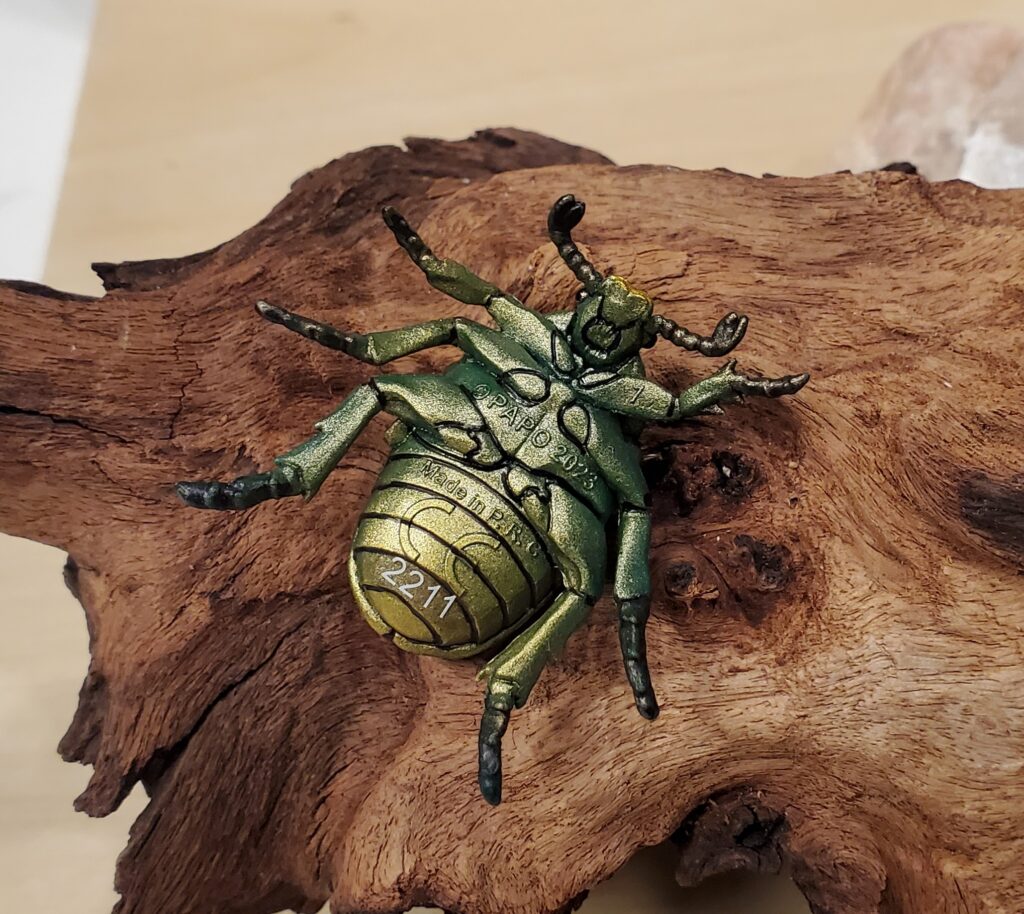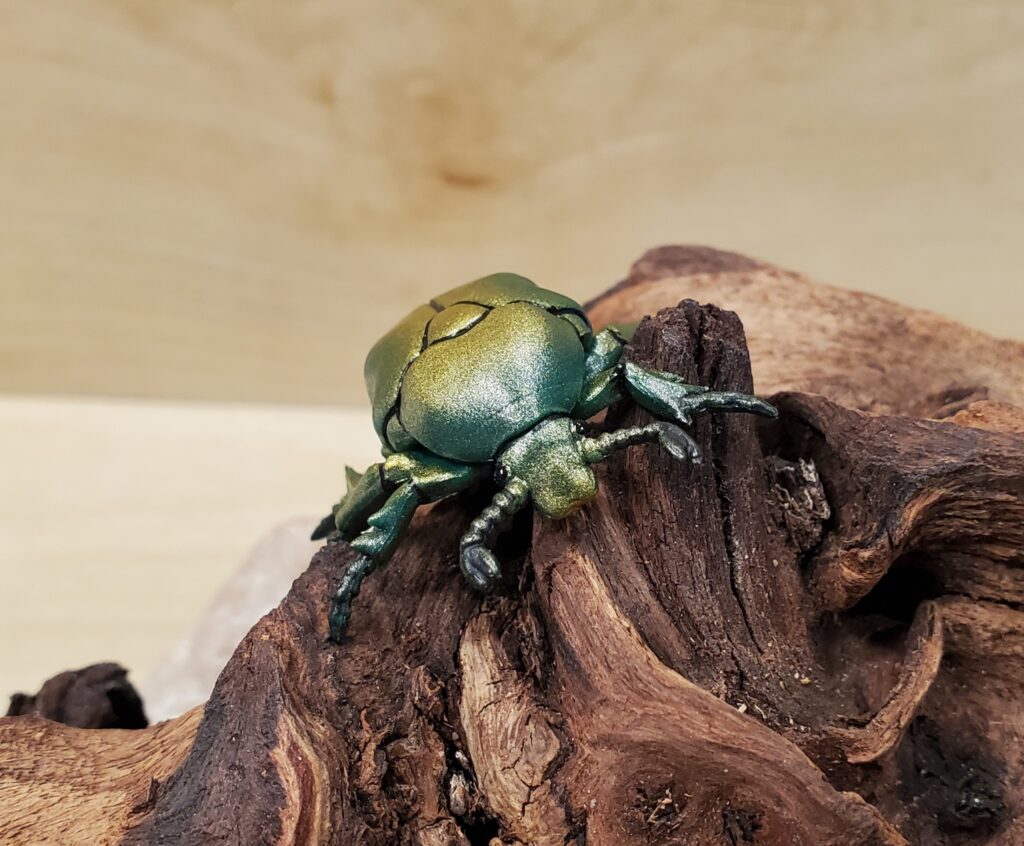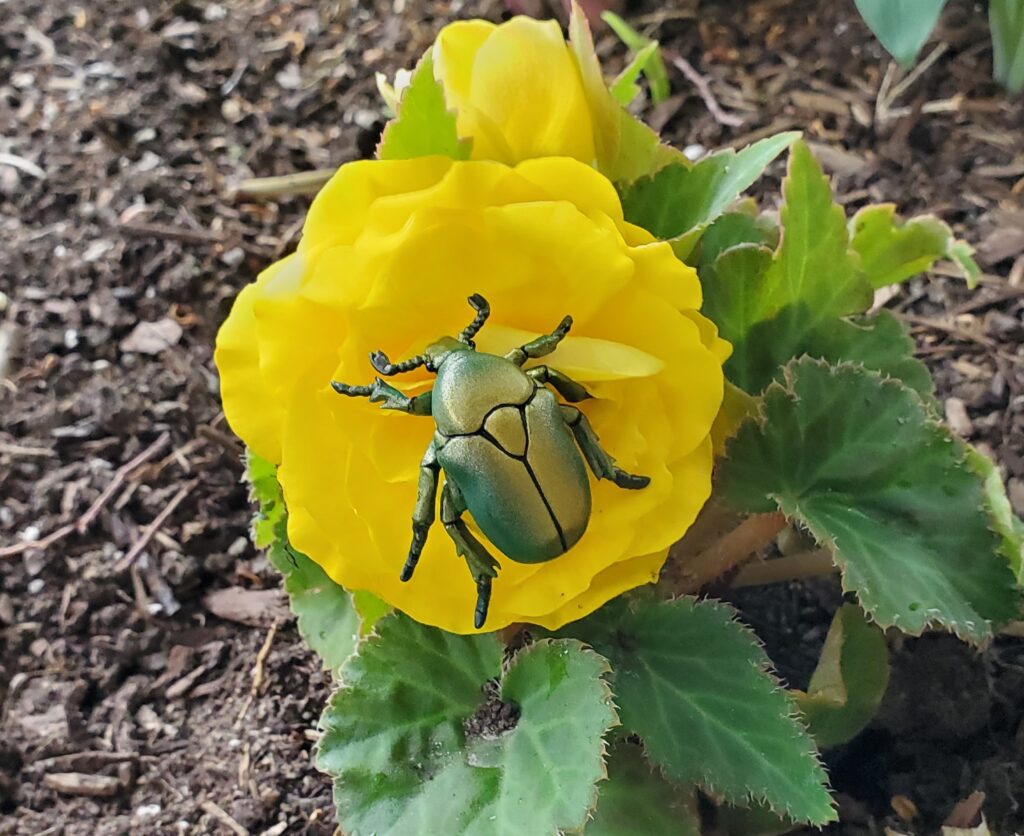Before I begin this review, I would again like to thank our friends at Happy Hen Toys who generously donated this review sample for the Blog!
Today I will be reviewing the European rose chafer by Papo, new for this year. When promo pics of this figure were first released, it looked to me like Protaetia cuprea, commonly known as the copper chafer. When the translated common name in English came to ‘European rose chafer’ I assumed it was intended to be Cetonia aurata. However, now that I have the figure in-hand, I am going back to my initial diagnosis of P. cuprea, based on shape, smooth texture of elytra and pronotum, shape of scutellum, and color, both in the shade of green and lack of white maculae across the elytra. Who knows, maybe Papo intended this to be C. aurata, but in my opinion the morphology and color best supports P. cuprea (some online retailers are selling it as C. aurata, but Papo’s website doesn’t specifically indicate what it supposed to be). Both species occur in France (where Papo is based) and both can go by the common English name ‘rose chafer’.

Protaetia cuprea belongs to a complicated complex of beetles that contains upwards of 19 taxa. These taxa are sometimes given species status, but I will refer to them as subspecies here for ease (the Papo figure appears to be modeled after the type subspecies, so regardless if you are a splitter or lumper, the toy probably still represents P. cuprea). As a whole, the species occurs throughout Europe to Asia Minor, the Russian Far East, Mongolia, and northern China. In France, there exists four of these subspecies: P. c. cuprea (Corsica), P. c. bourgini (widespread), P. c. metallica (French Alps), and P. c. olivacea (South of France). Larvae are detrivores, and usually live in the nests of ants, although sometimes they occur in woody debris in abandoned ant nests or in deciduous leaf litter. In the spring and early summer, adults primarily feed on pollen from flowers, including rose (hence the common name), apples, and other trees. In the late summer, when pollen is harder to come by, they switch to a diet of fruits (P. cuprea belongs to the subfamily Cetoniinae, whose members are commonly called ‘fruit chafers’).

Our Papo rendition of P. cuprea today has a body length of approximately 3.4 cm for a scale of 2:1-1.5:1 based on a body length of 1.6-2.2 cm.

The sculpt is fantastic. The dorsal surface of the elytra and pronotum are smooth (Cetonia aurata has weak ridges and deeper more pronounced punctures on the elytra). The shape of the head and scutellum are correct. Ventrally, every leg segment is sculpted, and the legs are positioned in the correct place on their respective thoracic segments. The number of exposed abdominal sternites is correct. The lateral spines, characteristic of many cetoniines (although I have no idea what their function is) are present. The antennae are distinctly lamellate, characteristic for the Scarabaeoidea. If one wanted to get really pedantic, the number of segments in the antennae (and their lamellae) and tarsi are not quite correct, but one can hardly expect that in a toy of this size (and I am sure if we looked into it, most toy insects probably get this wrong). It’s the level of accuracy one would only expect in a large enough figure to show that level of detail, or in Japanese or other figures cast from actual specimens.

The color is a soft metallic copper-green, lacking any indication of white maculae on the elytra. This is one of the main criteria for me calling this P. cuprea rather than C. aurata, as in the latter the base color is a bright metallic green and there are usually small white maculae running perpendicular across the elytra.

In all, this figure comes highly recommended to collectors of interesting taxa. Whether you want to call it P. cuprea or C. aurata, it represents a new and unique species to our hobby. Available wherever Papo figures are sold; in the United States it is readily available here from our good friends at Happy Hen Toys.


Disclaimer: links to Ebay and Amazon on the AnimalToyBlog are affiliate links, so we make a small commission if you use them. Thanks for supporting us!





Haha, you did decide to use both pictures. Great review, beautiful figure!
Yeah, so when I was asking which was better, it was for my daily Museum post, if and when this figure ever comes up by random selection :). But yes, for a Blog review, why not do both!?! Great idea, thanks again!